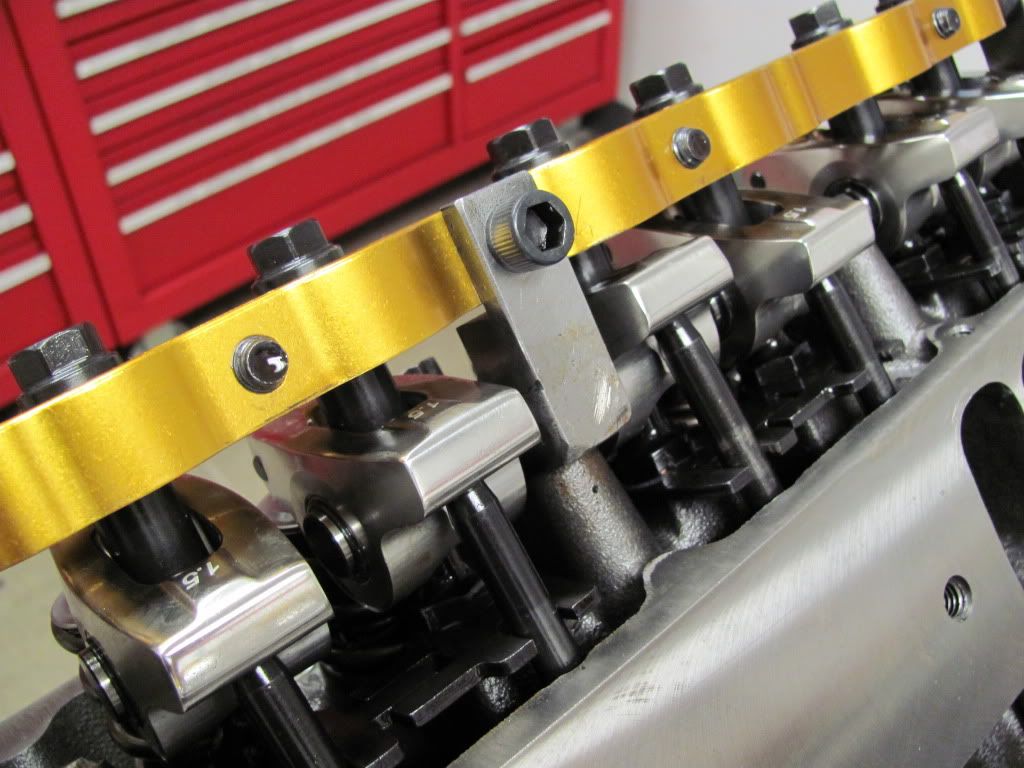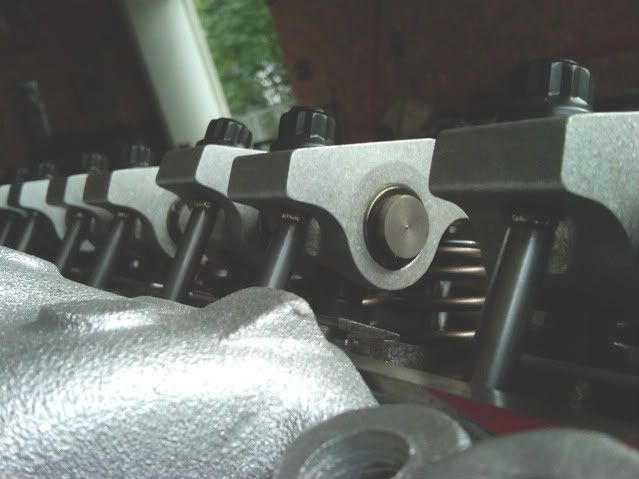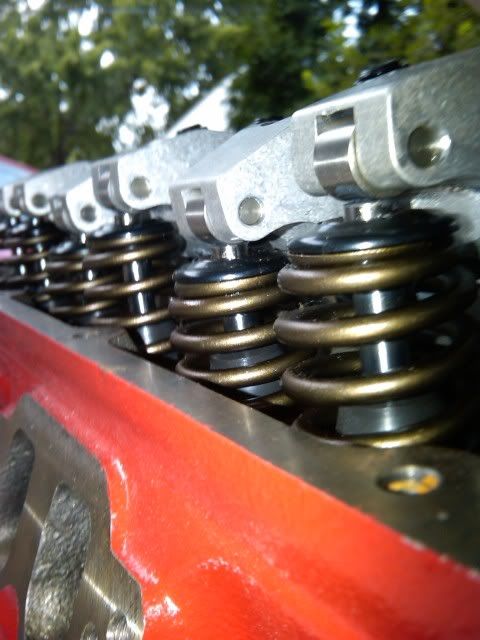I'll dig out my notes and flow charts and post some thoughts. I don't think it is gonna make much difference as it appears that Edelbrock is going to produce the Victor head for the LA engines.
Of course Edelbrock has announced the RPM Xtreme head for the big blocks and I've never seen one of those in real life.
Okay, my notes worked where my memory failed me. Designed it for a 5.200" length valve, I messed up and ordered a 5.110" valve, 1.940" intake, 1.625" exhaust. Used an .080" thick lash cap to keep the correct rocker arm geometry after ordering the wrong length valve.
lift.......intake flow.....exhaust flow
.100.........77.................NA
.200.......143.................NA
.300.......194.................NA
.400.......234................215
.500.......260................235
.600.......278................244
.700.......288................244
Crower valve springs 68670S 250# @ 1.820" IH 725# @ .750" lift coil bind @ 1.010" I recommended close to a single pattern cam and the cam grinder cam up with a long exhaust duration grind. I was just doing the heads and intake, others were in charge of the short block decisions.
The push rod pinch thickness was only .020" in some places between the intake port and the pushrod hole. So there was very little opening of the pushrod pinch. Tests with valves up to 2.05" only got a few cfm more flow by completely removing the pinch. Even with the large pushrod hole, the 3/8 pushrod was just touching on the intake manifold side, right at the top of the hole, so we ground some extra clearance there.
Selected the Edelbrock Super Victor intake because we knew we were going to spin this beyond 8,000 RPM. You know, 13.4 lb-ft of torque and 472.9 HP.




















